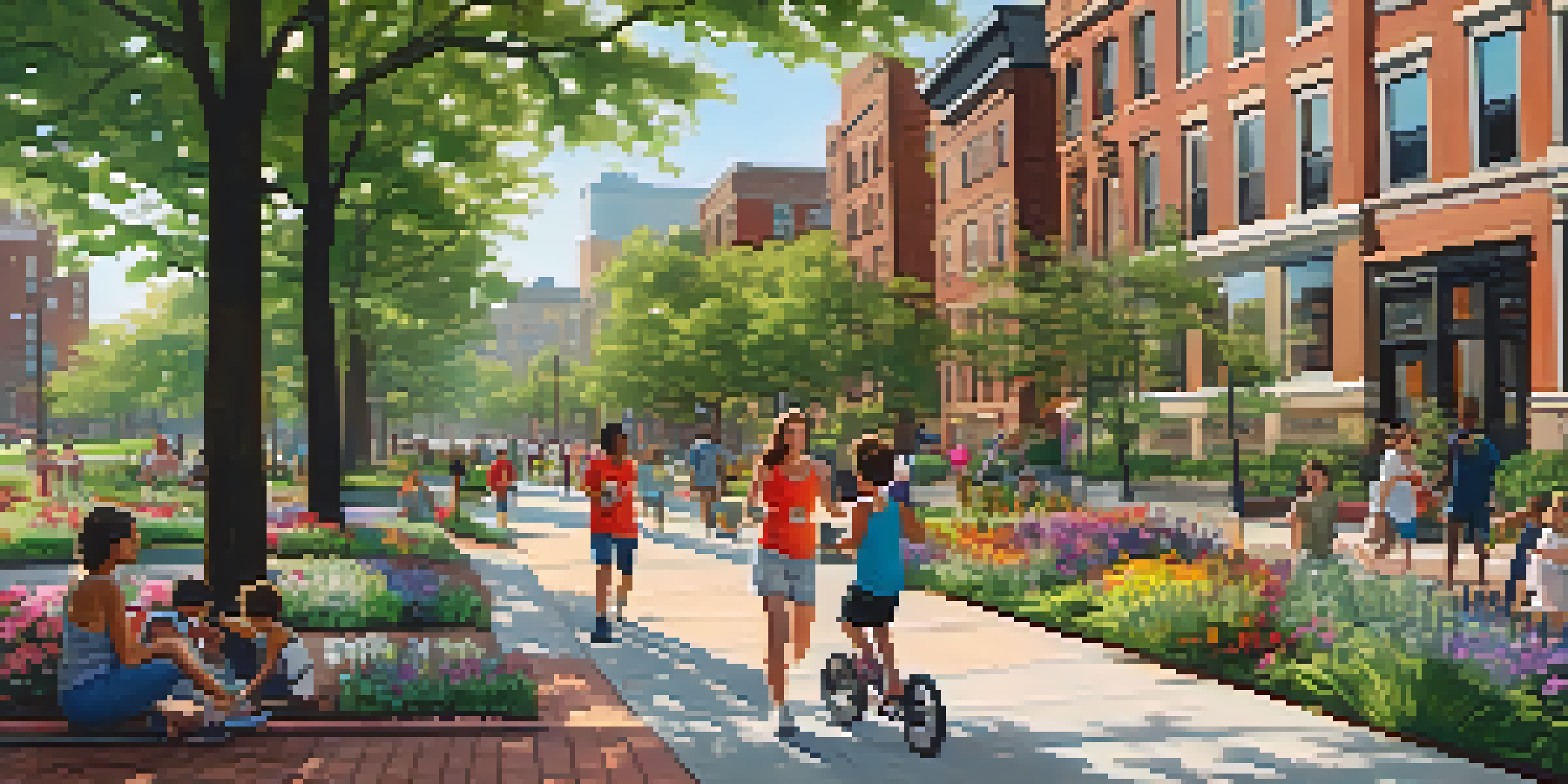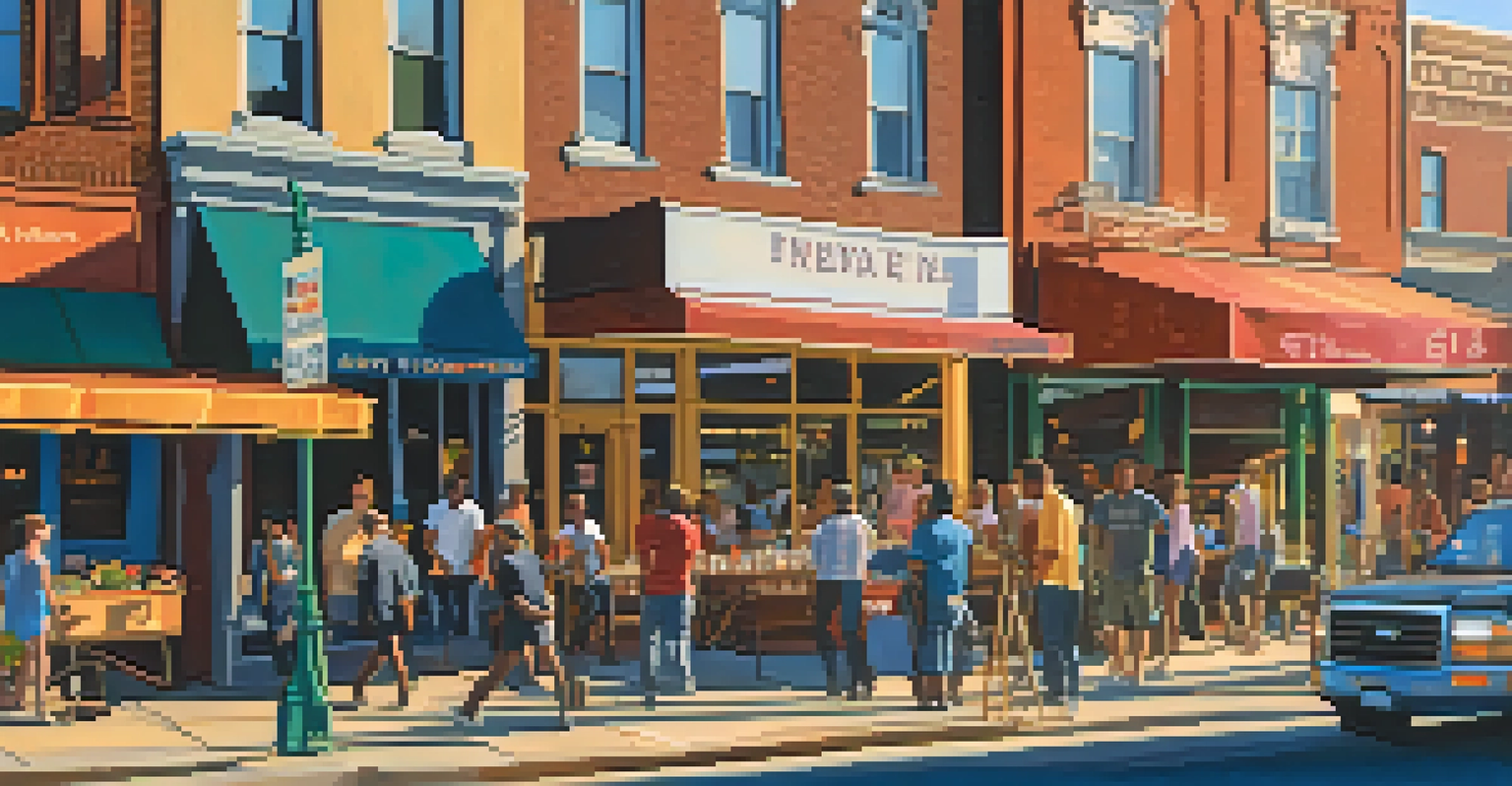Urban Development in Newark: Benefits and Drawbacks

Understanding Urban Development in Newark
Urban development in Newark refers to the efforts aimed at improving infrastructure, housing, and public spaces. This includes renovations of parks, transportation systems, and residential buildings. The city has been actively working to revitalize its downtown area and attract new businesses, which is essential for economic growth.
Urbanization is a double-edged sword; it can bring growth and opportunity, but also displacement and division.
Newark's strategic location near New York City makes it an appealing option for developers and investors. The ongoing projects aim to not only modernize the city but also preserve its rich history and cultural diversity. By enhancing urban spaces, Newark seeks to create a vibrant community that caters to both residents and visitors.
However, urban development is a double-edged sword, bringing both opportunities and challenges. As the city evolves, it is crucial to balance modernization with the needs of long-standing communities, ensuring that everyone benefits from the changes.
Economic Benefits of Urban Development
One of the most significant benefits of urban development in Newark is the potential for economic growth. By attracting new businesses, the city can create jobs and increase tax revenues. This economic influx can help fund essential public services, such as education and healthcare.

Additionally, revitalizing neighborhoods can lead to increased property values. Homeowners may find their investments appreciating, which can enhance their financial stability. The presence of new businesses can also improve the overall quality of life for residents, making the city a more desirable place to live and work.
Urban Development Boosts Economy
Revitalizing Newark's neighborhoods can attract new businesses, create jobs, and enhance overall quality of life.
Moreover, urban development can enhance Newark's appeal to tourists, providing a boost to local businesses. As more visitors flock to the city for its cultural events and attractions, the economy continues to thrive, creating a positive feedback loop of growth.
Social Advantages: Improved Quality of Life
Urban development can significantly enhance the quality of life for Newark residents. Improved infrastructure, such as better roads and public transportation, makes commuting easier and safer. Enhanced public spaces, like parks and community centers, provide residents with areas to gather and enjoy recreational activities.
The best way to predict the future is to create it.
Moreover, revitalized neighborhoods often lead to increased access to essential services like healthcare, education, and shopping. This accessibility can improve daily living for many residents, especially those in underserved areas. A well-planned urban environment fosters community engagement and social cohesion.
However, it's essential to ensure that these improvements benefit all residents, not just newcomers. Keeping a balance between modern amenities and maintaining the identity of existing communities is key to fostering a thriving urban landscape.
Environmental Impacts of Urban Development
Urban development can have significant environmental impacts, both positive and negative. On the positive side, modern developments often incorporate green spaces and sustainable practices, like energy-efficient buildings. These initiatives can improve air quality and provide habitats for local wildlife.
Conversely, increased construction can lead to environmental degradation if not managed properly. The risk of pollution and habitat destruction can rise, particularly if new projects encroach on natural areas. It's crucial for urban planners to consider these factors when designing new developments.
Gentrification Presents Challenges
As urban areas improve, rising property values can displace long-time residents, necessitating inclusive planning to protect community identity.
Sustainable urban development should prioritize the environment while accommodating growth. Implementing eco-friendly practices ensures that Newark can expand without sacrificing its natural resources or quality of life for future generations.
Challenges of Gentrification in Newark
One of the most pressing concerns associated with urban development is gentrification. As neighborhoods are revitalized, property values may rise, leading to increased rent and housing costs. This can displace long-time residents who can no longer afford to live in their communities.
While the influx of new businesses and residents can invigorate the local economy, it’s vital to protect the interests of existing communities. Gentrification can create tension between newcomers and long-standing residents, leading to a loss of cultural identity. Finding a way to celebrate diversity while fostering development is a challenge Newark faces.
Community engagement and inclusive planning are essential to mitigate the negative effects of gentrification. Ensuring that all voices are heard in the decision-making process can help create a development strategy that benefits everyone.
Public Safety and Urban Development
Urban development can play a crucial role in enhancing public safety in Newark. Improved infrastructure, such as better street lighting and pedestrian-friendly pathways, can reduce crime rates and foster a sense of security. Communities that feel safe are more likely to thrive socially and economically.
Additionally, the presence of new businesses and activities can lead to increased foot traffic, which can deter criminal behavior. A vibrant, active community is often a safer one, as residents are more engaged and vigilant in looking out for each other.
Community Engagement is Essential
Involving residents in the urban planning process ensures developments reflect local values and needs, fostering a sense of ownership.
However, it’s important to complement development with effective law enforcement and community programs. Collaboration between city planners and law enforcement can lead to holistic approaches that ensure safety while promoting growth.
Future of Urban Development in Newark
Looking ahead, the future of urban development in Newark seems promising yet complex. The city has the potential to become a leading example of urban revitalization, balancing growth with community needs. Continued investment in infrastructure, housing, and public services will be crucial for sustainable development.
Community involvement will play a pivotal role in shaping Newark's urban landscape. Engaging residents in planning processes fosters a sense of ownership and ensures developments reflect the community's values and needs. This collaboration can help mitigate some of the challenges associated with growth.

As Newark continues to evolve, it must remain committed to inclusivity and sustainability. By prioritizing these principles, the city can create a vibrant urban environment that benefits all its residents while preserving its unique character.